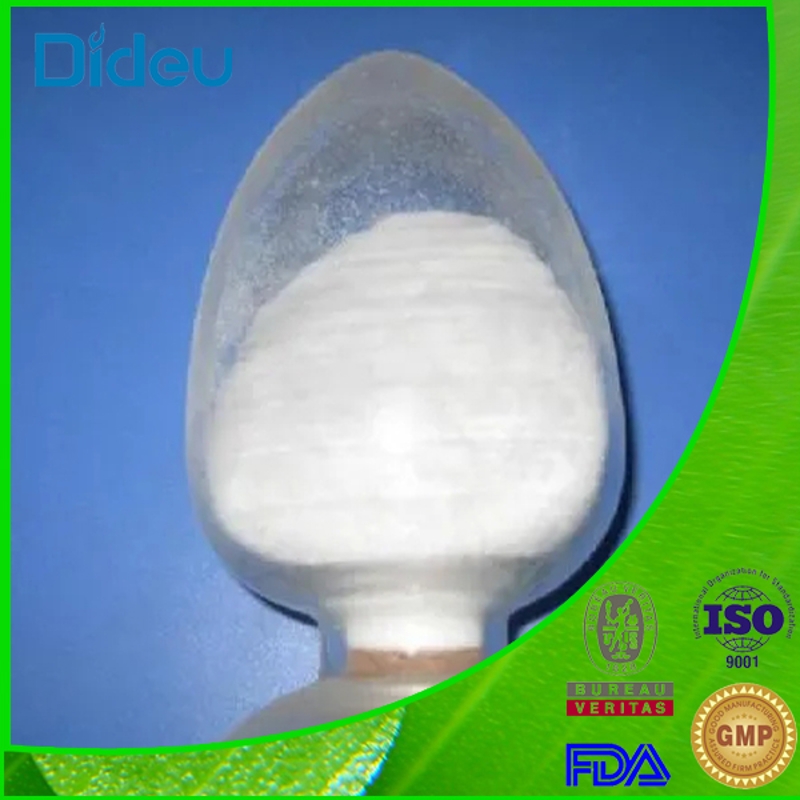-
Categories
-
Pharmaceutical Intermediates
-
Active Pharmaceutical Ingredients
-
Food Additives
- Industrial Coatings
- Agrochemicals
- Dyes and Pigments
- Surfactant
- Flavors and Fragrances
- Chemical Reagents
- Catalyst and Auxiliary
- Natural Products
- Inorganic Chemistry
-
Organic Chemistry
-
Biochemical Engineering
- Analytical Chemistry
- Cosmetic Ingredient
-
Pharmaceutical Intermediates
Promotion
ECHEMI Mall
Wholesale
Weekly Price
Exhibition
News
-
Trade Service
in older adults and is characterized by progressive cognitive impairment and behavioral impairment.
The two typical pathological features of AD are amyloid plaques in the brain, mainly formed by amyloid-β β (Aβ) fibrosis deposition, and nerve fiber tangles
caused by excessive phosphorylation of Tau protein in nerve cells.
At present, AD still lacks practical and effective treatment drugs, and with the extension of life expectancy and the aggravation of social aging, AD will be an urgent public medical problem
.
Microglia are resident innate immune cells of the central nervous system and play an important role
in maintaining brain homeostasis, brain development, and neurodegenerative pathology.
In recent years, genome-wide association studies have found that many AD risk loci are unique to or highly expressed in microglia, suggesting that microglia are closely related to AD pathological changes, and can even explore important potential AD therapeutic targets [1].
。 Microglia can bind to chemical components such as Aβ in amyloid plaques through their surface receptors, thereby triggering a microglial response to phagocytose and remove Amyloid Aβ plaques [2].
Although studies have shown that in vitro fibrosis Aβ has super hardness [3], it is not clear
how Aβ amyloid plaques in vivo change the hardness of the local brain tissue embedded with it.
Microglia have hardening properties (Durotaxis) [4], but how microglia recognize the physical changes brought about by amyloid plaques, how to respond to activation, and how to ultimately affect the pathological process of AD are all questions
that remain to be answered in the field of AD research.
On November 10, 2022, the team of Professor Mo Wei from the State Key Laboratory of Cell Stress Biology of Xiamen University, the School of Biosciences of Xiamen University, and the Department of Neuroscience of Xiamen University School of Medicine published a report entitled Microglial Piezo1 senses Aβ fibrils stiffness to in the journal Neuron The results of restrict Alzheimer's disease revealed that microglia are activated by mechanical force receptor Piezo1 sensing fibrotic Aβ hardness and significantly improving AD-related pathological changes
.
In this study, the researchers used Methoxy-X04 to label Aβ amyloid plaques in the brain in vivo and combined with atomic force microscopy to determine that the hardness of Aβ amyloid plaque-related tissues in fresh living brain slices was significantly higher than that of non-Aβ amyloid plaque-related tissues
.
Cells' perception of mechanical stimuli such as hardness often requires mechanically sensitive ion channel proteins [5].
The researchers analyzed the expression of several reported mechanosensory proteins in microglia and found that Piezo1 was the highest
expression in microglia compared to other mechanochannel proteins.
At the same time, in vitro primary cultured microglia, the expression of microglia Piezo1 protein was increased by stimulation of fibrotic Aβ hardness, and it was further clarified through calcium imaging and cell electrophysiological experiments that microglia sensed fibrotic Aβ hardness through Piezo1 and generated downstream electrochemical signals
.
in Piezo1P1-tdT; 5× FAD mouse model and AD patient brain slice samples, the researchers found that Piezo1 was highly expressed in
microglia surrounding amyloid plaques.
When microglia Piezo1 was specifically knocked out in 5×FAD mice, the Aβ amyloid plaques in the brains of mice increased significantly, synaptic function was weakened, and memory cognitive dysfunction was aggravated
.
In vivo and in vitro experiments have shown that after Piezo1 knockout or knockdown, microglia phagocytosis is significantly reduced
.
In 5×FAD mice, the researchers used adult mouse microglial flow cytometry sorting combined with RNA sequencing analysis and found that the significantly downregulated genes after microglia-specific knockout of Piezo1 mainly involved cytoskeletal proteins, Rho proteins, integrins and other signaling pathways closely related to cell mechanical signaling and cell migration
.
Correspondingly, after the knockout of microglia Piezo1, the number of microglia migrating to amyloid plaques decreased, and the degree of plaque wrapping was reduced, resulting in more loose amyloid
plaques.
Finally, in 5×FAD mice, after intraperitoneal injection of Piezo1-specific agonist Yoda1, the researchers significantly increased the aggregation of microglia around amyloid plaques and endocytosis of Aβ, reduced the accumulation of Aβ in the brain of mice, and significantly improved the cognitive dysfunction
of 5×FAD mice.
However, when microglia Piezo1 was knocked out in 5×FAD mice, Yoda1 administration no longer had an abliorating Aβ-related pathological effect, indicating that the mitigating effect of Yoda1 on Aβ-related phenotypes in AD mice depended on the activation
of microglia Piezo1.
In conclusion, this study reveals the protective role of microglia Piezo1-mediated signaling in the pathological process of AD from the perspective of mechanobiology, broadens the understanding that microglia are closely related to the pathological process of AD, and also provides a potential new target for the drug development of
AD.
The first author and co-corresponding author of the paper is Dr.
Hu Jin; PhD student Chen Qiang, master student Zhu Hongrui (graduated and currently working in the First Affiliated Hospital of University of Science and Technology of China) and Director Hou Lichao of the Department of Anesthesiology of Xiang'an Hospital Affiliated to Xiamen University are co-first authors
of this paper.
Professor Mo Wei and Professor Zhang Liang are the co-corresponding authors
of this paper.
Special thanks to the National Health and Disease Human Brain Tissue Resource Bank for providing AD human brain tissue samples
for this study.
Mo Wei's laboratory mainly focuses on cell stress and cell death, and welcomes PhDs with immune or neural circuit backgrounds to join
.
Original link:
https://doi.
org/10.
1016/j.
neuron.
2022.
10.
021
Platemaker: Eleven
References
1.
Lopes, K.
P.
, Snijders, G.
J.
L.
, Humphrey, J.
, Allan, A.
, Sneeboer, M.
A.
M.
, Navarro, E.
, Schilder, B.
M.
, Vialle, R.
A.
, Parks, M.
, Missall, R.
, et al.
(2022).
Genetic analysis of the human microglial transcriptome across brain regions, aging and disease pathologies.
Nat Genet 54, 4-17.
10.
1038/s41588-021-00976-y.
2.
Zhao, Y.
, Wu, X.
, Li, X.
, Jiang, L.
L.
, Gui, X.
, Liu, Y.
, Sun, Y.
, Zhu, B.
, Pina-Crespo, J.
C.
, Zhang, M.
, et al.
(2018).
TREM2 Is a Receptor for beta-Amyloid that Mediates Microglial Function.
Neuron 97, 1023-1031 e1027.
10.
1016/j.
neuron.
2018.
01.
031.
3.
Xu, Z.
, Paparcone, R.
, and Buehler, M.
J.
(2010).
Alzheimer's abeta(1-40) amyloid fibrils feature size-dependent mechanical properties.
Biophys J 98, 2053-2062.
10.
1016/j.
bpj.
2009.
12.
4317.
4.
Bollmann, L.
, Koser, D.
E.
, Shahapure, R.
, Gautier, H.
O.
, Holzapfel, G.
A.
, Scarcelli, G.
, Gather, M.
C.
, Ulbricht, E.
, and Franze, K.
(2015).
Microglia mechanics: immune activation alters traction forces and durotaxis.
Front Cell Neurosci 9, 363.
10.
3389/fncel.
2015.
00363.
5.
Delmas, P.
, Hao, J.
, and Rodat-Despoix, L.
(2011).
Molecular mechanisms of mechanotransduction in mammalian sensory neurons.
Nat Rev Neurosci 12, 139-153.
10.
1038/nrn2993.
Reprint instructions
【Non-original article】The copyright of this article belongs to the author of the article, welcome to forward and share, reprinting is prohibited without the permission of the author, the author has all legal rights, violators will be investigated
.







